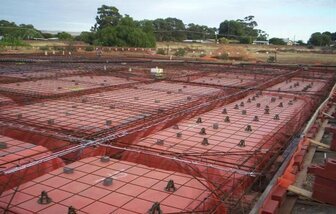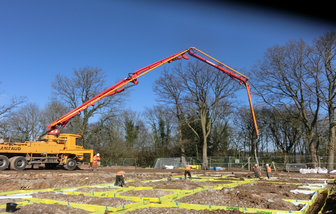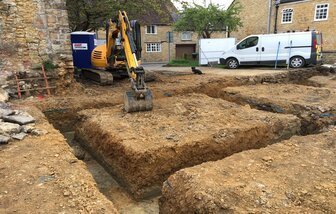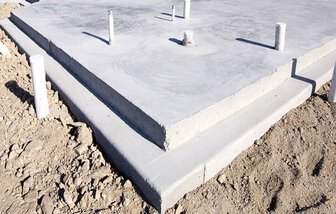Why are building foundations necessary?
Building foundations are an essential component of any construction project. They provide a solid base upon which the rest of the structure is built, ensuring stability, durability, and safety. In this article, we will explore the reasons why building foundations are necessary and the critical role they play in the construction process.
Foundation: The Beginning of a Construction Project
Foundations are the bedrock of any building, be it a humble house or towering high-rise buildings. They have the vital job of transferring the entire weight of a structure to the ground beneath.
Foundations are an integral part of a construction task, and their importance cannot be overstated. This article aims to shed light on why foundations are crucial in building construction.
Every construction project starts with laying the foundation. A building foundation is not merely a slab of concrete that supports the structure’s weight.
It is a complex system engineered to bear the dead loads (the weight of the structure itself) and live loads (the weight of its occupants and their belongings) of a building.
A proper foundation ensures that the weight is evenly distributed to the ground underneath, maintaining the structural integrity intact.
When it comes to constructing a building, one of the most crucial elements that often goes unnoticed is the foundation. While it may seem like a simple concrete slab or a series of footings, building foundations play a vital role in ensuring the stability, durability, and safety of any structure. In this article, we will explore why building foundations are necessary and the key reasons behind their importance.
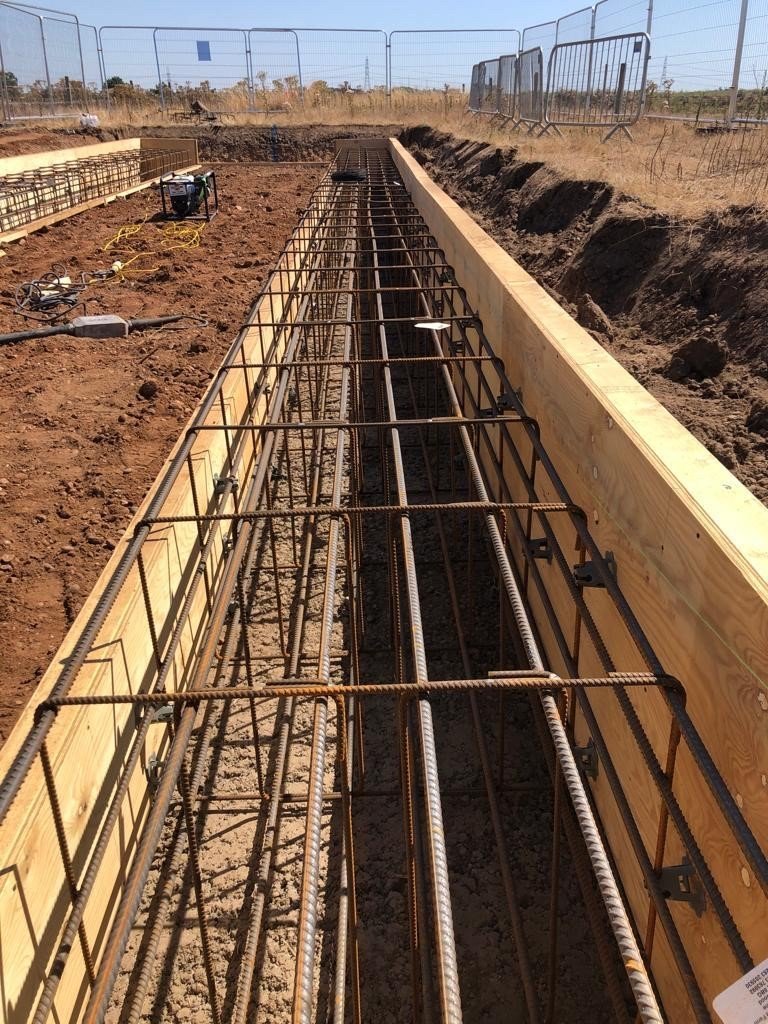
There are primarily two types of foundations – shallow foundations and deep foundations. Shallow foundations, like the slab-on-grade foundation or the box foundation, are typically used for smaller structures or buildings in areas with hard soil.
These foundations are placed close to the surface of the ground and are easier and cheaper to construct. Deep foundations, on the other hand, are used for larger structures or in areas with weak soil. Pile foundations and raft foundations are examples of deep foundations. These foundations go deep into the ground, bypassing weak or loose surface soils to reach stronger, more compact soil or rock.
A properly built foundation acts as a barrier against ground moisture, preventing water from seeping into the structure, which can lead to costly repairs. The foundation wall, usually made of reinforced concrete, acts as this barrier. In regions with high groundwater levels, foundation walls help protect the structure from potential water damage.
Structural Integrity and the Role of Foundations One of the main reasons why foundations are vital is the role they play in maintaining a building’s structural integrity. A strong foundation is essential for the safety and longevity of a structure. Without a solid foundation, buildings would be unable to stand tall and stable, especially in inclement weather conditions.
A poorly constructed foundation can lead to serious issues down the line, including cracks in the foundation walls, uneven floors, and even structural collapse in severe cases. In contrast, a well-built foundation can withstand the various natural forces that a building may be subjected to, keeping the structure stable and its occupants safe.
Given the importance of a solid foundation, it’s no surprise that much of a structural engineer’s work revolves around foundation engineering.
A structural engineer ensures that the foundation is designed and built correctly, considering factors like the type of soil, the load the foundation will need to bear, and the local climate. They may also need to consider special circumstances, such as building in a flood-prone area or on a sloping location.
Structural engineers are responsible for ensuring that the building’s foundation is capable of bearing the entire weight of the structure. They also need to consider the lateral movement of the soil and the forces that can cause the foundation to shift or crack.
The importance of a good foundation cannot be understated. It is the first step in ensuring that the building’s structure will stand tall and strong for years to come.
It is the backbone of the entire house, the unsung hero that silently bears the weight and brunt of nature, ensuring the safety and comfort of the occupants.
A solid foundation assures quality and longevity in a structure, whether it’s a residential home, a commercial building, or a towering skyscraper. Without a doubt, foundations are the unsung heroes of construction, quietly providing the stability and strength that every building needs.
n conclusion, foundations are vital in construction because they provide the necessary support that keeps the building stable and safe. They protect the structure from ground moisture, insulate against heat loss, and bear the weight of the entire structure.
A well-built foundation is a primary purpose and the key to a successful construction task. Hence, never underestimate the importance of a solid foundation in a construction project. It is not just the place where the building lies; it is the bedrock on which the building’s stability, safety, and longevity depend.
A solid foundation is essential for maintaining the structural integrity of a building. It serves as the base upon which the entire structure is built. By distributing the weight of the building evenly, foundations prevent excessive settling or shifting of the structure, which can lead to structural damage and compromise its stability. A well-designed and properly constructed foundation provides the necessary support to withstand external forces such as wind, earthquakes, and other natural disasters.
Buildings are subjected to various loads, including dead loads (the weight of the building itself), live loads (people, furniture, equipment), and environmental loads (such as wind and snow). The foundation acts as a load-bearing element, transferring the weight of the building to the ground safely and efficiently. It ensures that the building can withstand the imposed loads without excessive deflection or deformation.
Another important function of building foundations is to protect the structure from moisture-related issues. Moisture can seep into the ground and gradually make its way up into the building, leading to a range of problems such as mold growth, rotting of wooden components, and deterioration of materials. A well-designed foundation includes moisture barriers and proper drainage systems to prevent water infiltration and keep the building dry and free from moisture-related damage.
A strong and stable foundation significantly contributes to the longevity of a building. By providing a solid base, the foundation helps to minimize the wear and tear on the structure over time. A properly constructed foundation ensures that the building remains intact and can withstand the test of time, reducing the need for costly repairs or potential structural failures in the future.
Building foundations can also contribute to energy efficiency. Insulated foundations help to regulate the temperature inside the building, reducing the energy required for heating and cooling. By preventing heat loss or gain through the ground, foundations can help lower energy consumption and provide a more comfortable indoor environment.
Building foundations are not only necessary for the structural integrity of a building but also for compliance with building codes and regulations. Local building codes often specify the minimum requirements for foundations, including their design, materials, and construction methods. Compliance with these codes is essential to ensure the safety and legal compliance of the building.
Building foundations are a critical component of any construction project. They provide structural stability, distribute loads, control moisture, enhance longevity, improve energy efficiency, and ensure compliance with building codes. Investing in a well-designed and properly constructed foundation is essential to ensure the safety, durability, and long-term success of any building.
Foundations for the Empire State Building?
The Empire State Building, standing tall and proud in the heart of New York City, is an iconic landmark that has captivated people around the world for
Why building foundations are necessary?
Foundations are the bedrock of any building, be it a humble house or towering high-rise buildings. They have the vital job of transferring the entire weight
The perfect concrete pour for your construction project
We will discuss the dos and don’ts of concreting for your next construction project, covering aspects such as the concrete mix, pouring, curing process
What is a raft foundation?
Raft foundations are a popular choice for many construction projects, providing a stable and durable base for buildings. Explore the benefits of raft foundations, the construction process
What is a building foundation?
A building foundation is the lowermost part of a structure that is in direct contact with the ground. It is designed to distribute the weight of the building evenly and transfer it to the underlying soil or rock.
Types of building foundations
This article discusses the different types of building foundations in the UK, including strip foundations, raft foundations, piled foundations, trenchfill foundations, pad foundations, caisson foundations
How long do foundations take to cure?
A step-by-step guide is required, starting with marking lines to indicate where to dig the foundations trenches. After landscaping, shuttering, reinforced with timber, must be used
How to set out building foundations
Setting out the building foundations of a construction project is a critical stage, and it requires the use of specialised tools and materials. In the UK, the most common tools
How deep do building foundations need to be?
Building foundations are a critical component of any construction project in the UK, and it is important to ensure that they are constructed to the required depth.
Foundation building regulations
The regulations are designed to ensure that construction projects are structurally sound and meet certain safety standards. This includes the use of appropriate foundation systems
What is a building slab?
Building slabs are an essential component of construction projects in the UK. They provide a solid and stable foundation for structures, distributing the weight evenly across the ground. This article discusses the types of building slabs commonly
Why building foundations fail?
Understanding the factors that contribute to building foundation failures in the UK, such as soil conditions, poor drainage, tree roots, construction errors, subsidence, and the age of buildings.
Ready to start your project?
Let's Work Together
To get started, for general enquiries simply complete the form below. Provide us with your project details, and our team will review your requirements. We will then get back to you with a customised solution that fits your needs. Whether you have a small-scale project or a large-scale development, we have the expertise and resources to handle it. Once we have received your submission, you will receive a confirmation email (Please check all your email boxes)
If you prefer, and have a project in mind and seeking a price you can also send us your project documents and any photographs directly to Price@totalregen.co.uk. We will carefully examine your documents and provide you with a competitive quote together with a timescale from inception through to completion for your project.


